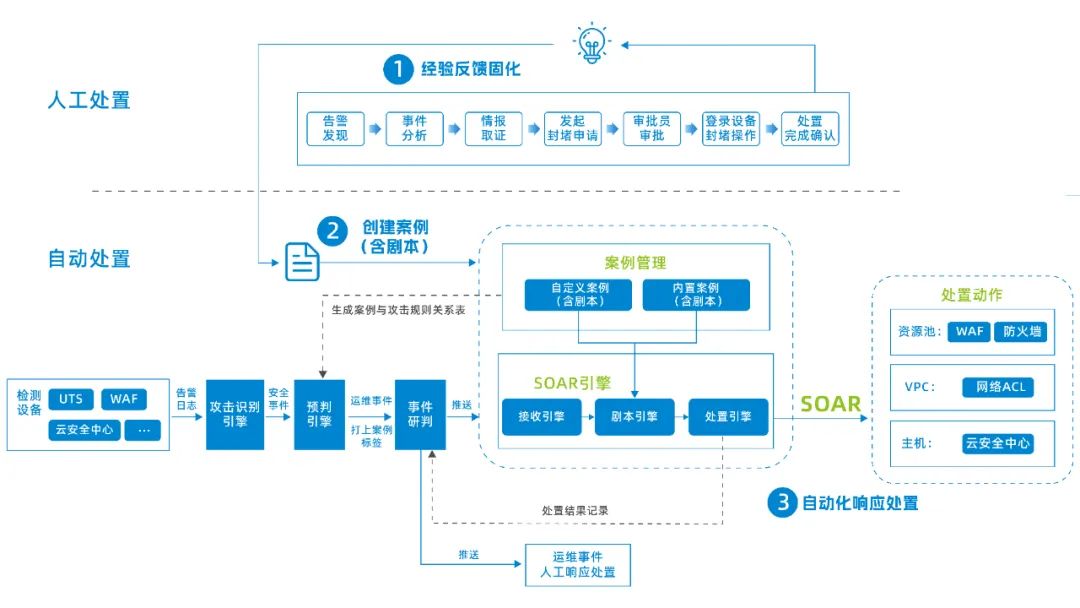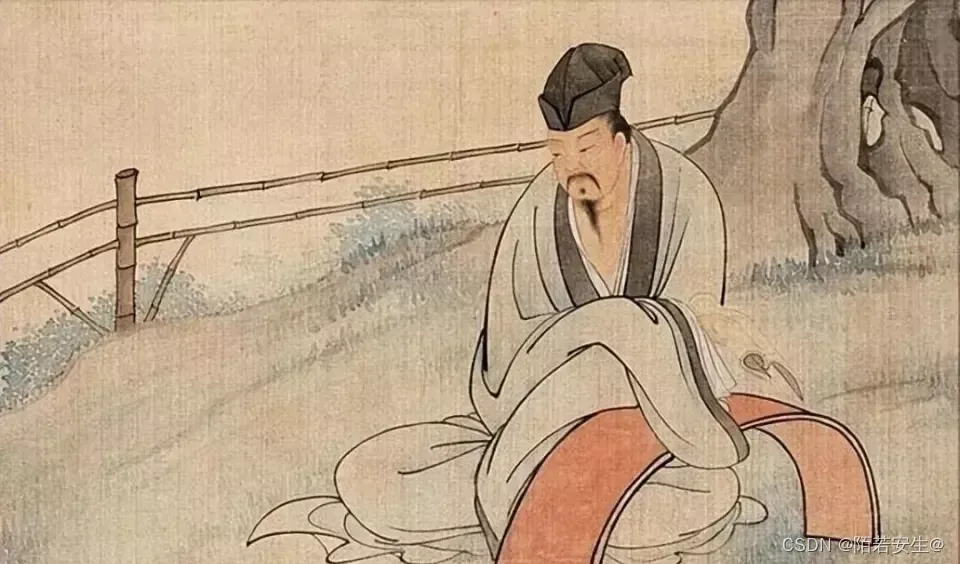前言
之前对于xml格式的YOLO数据集,之前记录过如何用imgaug对其进行数据增强。不过DOTA数据集采用的是txt格式的旋转框标注,因此不能直接套用,只能另辟蹊径。
DOTA数据集简介
DOTA数据集全称:Dataset for Object deTection in Aerial images
DOTA数据集v1.0共收录2806张4000 × 4000的图片,总共包含188282个目标。

DOTA数据集论文介绍:https://arxiv.org/pdf/1711.10398.pdf
数据集官网:https://captain-whu.github.io/DOTA/dataset.html
DOTA数据集总共有3个版本
DOTAV1.0
类别数目:15
类别名称:plane, ship, storage tank, baseball diamond, tennis court, basketball court, ground track field, harbor, bridge, large vehicle, small vehicle, helicopter, roundabout, soccer ball field , swimming pool
DOTAV1.5
类别数目:16
类别名称:plane, ship, storage tank, baseball diamond, tennis court, basketball court, ground track field, harbor, bridge, large vehicle, small vehicle, helicopter, roundabout, soccer ball field, swimming pool , container crane
DOTAV2.0
类别数目:18
类别名称:plane, ship, storage tank, baseball diamond, tennis court, basketball court, ground track field, harbor, bridge, large vehicle, small vehicle, helicopter, roundabout, soccer ball field, swimming pool, container crane, airport , helipad
DOTAV2.0版本,备份在我的GitHub上。
https://github.com/zstar1003/Dataset
本实验演示选择的是DOTA数据集中的一张图片,原图如下:

标签如下:
每个对象有10个数值,前8个代表一个矩形框四个角的坐标,第9个表示对象类别,第10个表示识别难易程度,0表示简单,1表示困难。

使用JDet中的visualization.py将标签可视化,效果如下图所示:

注:由于可视化代码需要坐标点输入为整数,因此后续给输出对象坐标点进行了取整操作,这会损失一些精度。
数据增强及可视化
调整亮度
这里通过skimage.exposure.adjust_gamma来调整亮度:
调整亮度
def changeLight(img, inputtxt, outputiamge, outputtxt):
# random.seed(int(time.time()))
flag = random.uniform(0.5, 1.5) # flag>1为调暗,小于1为调亮
label = round(flag, 2)
(filepath, tempfilename) = os.path.split(inputtxt)
(filename, extension) = os.path.splitext(tempfilename)
outputiamge = os.path.join(outputiamge + "/" + filename + "_" + str(label) + ".png")
outputtxt = os.path.join(outputtxt + "/" + filename + "_" + str(label) + extension)
ima_gamma = exposure.adjust_gamma(img, 0.5)
shutil.copyfile(inputtxt, outputtxt)
cv.imwrite(outputiamge, ima_gamma)

添加高斯噪声
添加高斯噪声需要先将像素点进行归一化(/255)
添加高斯噪声
def gasuss_noise(image, inputtxt, outputiamge, outputtxt, mean=0, var=0.01):
'''
mean : 均值
var : 方差
'''
image = np.array(image / 255, dtype=float)
noise = np.random.normal(mean, var ** 0.5, image.shape)
out = image + noise
if out.min() < 0:
low_clip = -1.
else:
low_clip = 0.
out = np.clip(out, low_clip, 1.0)
out = np.uint8(out * 255)
(filepath, tempfilename) = os.path.split(inputtxt)
(filename, extension) = os.path.splitext(tempfilename)
outputiamge = os.path.join(outputiamge + "/" + filename + "_gasunoise_" + str(mean) + "_" + str(var) + ".png")
outputtxt = os.path.join(outputtxt + "/" + filename + "_gasunoise_" + str(mean) + "_" + str(var) + extension)
shutil.copyfile(inputtxt, outputtxt)
cv.imwrite(outputiamge, out)

调整对比度
调整对比度
def ContrastAlgorithm(rgb_img, inputtxt, outputiamge, outputtxt):
img_shape = rgb_img.shape
temp_imag = np.zeros(img_shape, dtype=float)
for num in range(0, 3):
# 通过直方图正规化增强对比度
in_image = rgb_img[:, :, num]
# 求输入图片像素最大值和最小值
Imax = np.max(in_image)
Imin = np.min(in_image)
# 要输出的最小灰度级和最大灰度级
Omin, Omax = 0, 255
# 计算a 和 b的值
a = float(Omax - Omin) / (Imax - Imin)
b = Omin - a * Imin
# 矩阵的线性变化
out_image = a * in_image + b
# 数据类型的转化
out_image = out_image.astype(np.uint8)
temp_imag[:, :, num] = out_image
(filepath, tempfilename) = os.path.split(inputtxt)
(filename, extension) = os.path.splitext(tempfilename)
outputiamge = os.path.join(outputiamge + "/" + filename + "_contrastAlgorithm" + ".png")
outputtxt = os.path.join(outputtxt + "/" + filename + "_contrastAlgorithm" + extension)
shutil.copyfile(inputtxt, outputtxt)
cv.imwrite(outputiamge, temp_imag)

旋转
旋转本质上是利用仿射矩阵,这里预留了接口参数,可以自定义旋转角度
旋转
def rotate_img_bbox(img, inputtxt, temp_outputiamge, temp_outputtxt, angle, scale=1):
nAgree = angle
size = img.shape
w = size[1]
h = size[0]
for numAngle in range(0, len(nAgree)):
dRot = nAgree[numAngle] * np.pi / 180
dSinRot = math.sin(dRot)
dCosRot = math.cos(dRot)
nw = (abs(np.sin(dRot) * h) + abs(np.cos(dRot) * w)) * scale
nh = (abs(np.cos(dRot) * h) + abs(np.sin(dRot) * w)) * scale
(filepath, tempfilename) = os.path.split(inputtxt)
(filename, extension) = os.path.splitext(tempfilename)
outputiamge = os.path.join(temp_outputiamge + "/" + filename + "_rotate_" + str(nAgree[numAngle]) + ".png")
outputtxt = os.path.join(temp_outputtxt + "/" + filename + "_rotate_" + str(nAgree[numAngle]) + extension)
rot_mat = cv.getRotationMatrix2D((nw * 0.5, nh * 0.5), nAgree[numAngle], scale)
rot_move = np.dot(rot_mat, np.array([(nw - w) * 0.5, (nh - h) * 0.5, 0]))
rot_mat[0, 2] += rot_move[0]
rot_mat[1, 2] += rot_move[1]
# 仿射变换
rotat_img = cv.warpAffine(img, rot_mat, (int(math.ceil(nw)), int(math.ceil(nh))), flags=cv.INTER_LANCZOS4)
cv.imwrite(outputiamge, rotat_img)
save_txt = open(outputtxt, 'w')
f = open(inputtxt)
for line in f.readlines():
line = line.split(" ")
x1 = float(line[0])
y1 = float(line[1])
x2 = float(line[2])
y2 = float(line[3])
x3 = float(line[4])
y3 = float(line[5])
x4 = float(line[6])
y4 = float(line[7])
category = str(line[8])
dif = str(line[9])
point1 = np.dot(rot_mat, np.array([x1, y1, 1]))
point2 = np.dot(rot_mat, np.array([x2, y2, 1]))
point3 = np.dot(rot_mat, np.array([x3, y3, 1]))
point4 = np.dot(rot_mat, np.array([x4, y4, 1]))
x1 = round(point1[0], 3)
y1 = round(point1[1], 3)
x2 = round(point2[0], 3)
y2 = round(point2[1], 3)
x3 = round(point3[0], 3)
y3 = round(point3[1], 3)
x4 = round(point4[0], 3)
y4 = round(point4[1], 3)
# string = str(x1) + " " + str(y1) + " " + str(x2) + " " + str(y2) + " " + str(x3) + " " + str(y3) + " " + str(x4) + " " + str(y4) + " " + category + " " + dif
string = str(int(x1)) + " " + str(int(y1)) + " " + str(int(x2)) + " " + str(int(y2)) + " " + str(
int(x3)) + " " + str(int(y3)) + " " + str(int(x4)) + " " + str(int(y4)) + " " + category + " " + dif
save_txt.write(string)

翻转图像
翻转图像使用cv.flip进行
翻转图像
def filp_pic_bboxes(img, inputtxt, outputiamge, outputtxt):
(filepath, tempfilename) = os.path.split(inputtxt)
(filename, extension) = os.path.splitext(tempfilename)
output_vert_flip_img = os.path.join(outputiamge + "/" + filename + "_vert_flip" + ".png")
output_vert_flip_txt = os.path.join(outputtxt + "/" + filename + "_vert_flip" + extension)
output_horiz_flip_img = os.path.join(outputiamge + "/" + filename + "_horiz_flip" + ".png")
output_horiz_flip_txt = os.path.join(outputtxt + "/" + filename + "_horiz_flip" + extension)
h, w, _ = img.shape
# 垂直翻转
vert_flip_img = cv.flip(img, 1)
cv.imwrite(output_vert_flip_img, vert_flip_img)
# 水平翻转
horiz_flip_img = cv.flip(img, 0)
cv.imwrite(output_horiz_flip_img, horiz_flip_img)
# ---------------------- 调整boundingbox ----------------------
save_vert_txt = open(output_vert_flip_txt, 'w')
save_horiz_txt = open(output_horiz_flip_txt, 'w')
f = open(inputtxt)
for line in f.readlines():
line = line.split(" ")
x1 = float(line[0])
y1 = float(line[1])
x2 = float(line[2])
y2 = float(line[3])
x3 = float(line[4])
y3 = float(line[5])
x4 = float(line[6])
y4 = float(line[7])
category = str(line[8])
dif = str(line[9])
vert_string = str(int(round(w - x1, 3))) + " " + str(int(y1)) + " " + str(int(round(w - x2, 3))) + " " + str(
int(y2)) + " " + str(int(round(w - x3, 3))) + " " + str(int(y3)) + " " + str(
int(round(w - x4, 3))) + " " + str(int(y4)) + " " + category + " " + dif
horiz_string = str(int(x1)) + " " + str(int(round(h - y1, 3))) + " " + str(int(x2)) + " " + str(
int(round(h - y2, 3))) + " " + str(int(x3)) + " " + str(int(round(h - y3, 3))) + " " + str(
int(x4)) + " " + str(int(round(h - y4, 3))) + " " + category + " " + dif
save_horiz_txt.write(horiz_string)
save_vert_txt.write(vert_string)

平移图像
平移图像本质也是利用仿射矩阵
平移图像
def shift_pic_bboxes(img, inputtxt, outputiamge, outputtxt):
w = img.shape[1]
h = img.shape[0]
x_min = w # 裁剪后的包含所有目标框的最小的框
x_max = 0
y_min = h
y_max = 0
f = open(inputtxt)
for line in f.readlines():
line = line.split(" ")
x1 = float(line[0])
y1 = float(line[1])
x2 = float(line[2])
y2 = float(line[3])
x3 = float(line[4])
y3 = float(line[5])
x4 = float(line[6])
y4 = float(line[7])
category = str(line[8])
dif = str(line[9])
x_min = min(x_min, x1, x2, x3, x4)
y_min = min(y_min, y1, y2, y3, y4)
x_max = max(x_max, x1, x2, x3, x4)
y_max = max(y_max, y1, y2, y3, y4)
d_to_left = x_min # 包含所有目标框的最大左移动距离
d_to_right = w - x_max # 包含所有目标框的最大右移动距离
d_to_top = y_min # 包含所有目标框的最大上移动距离
d_to_bottom = h - y_max # 包含所有目标框的最大下移动距离
x = random.uniform(-(d_to_left - 1) / 3, (d_to_right - 1) / 3)
y = random.uniform(-(d_to_top - 1) / 3, (d_to_bottom - 1) / 3)
(filepath, tempfilename) = os.path.split(inputtxt)
(filename, extension) = os.path.splitext(tempfilename)
if x >= 0 and y >= 0:
outputiamge = os.path.join(
outputiamge + "/" + filename + "_shift_" + str(round(x, 3)) + "_" + str(round(y, 3)) + ".png")
outputtxt = os.path.join(
outputtxt + "/" + filename + "_shift_" + str(round(x, 3)) + "_" + str(round(y, 3)) + extension)
elif x >= 0 and y < 0:
outputiamge = os.path.join(
outputiamge + "/" + filename + "_shift_" + str(round(x, 3)) + "__" + str(round(abs(y), 3)) + ".png")
outputtxt = os.path.join(
outputtxt + "/" + filename + "_shift_" + str(round(x, 3)) + "__" + str(round(abs(y), 3)) + extension)
elif x < 0 and y >= 0:
outputiamge = os.path.join(
outputiamge + "/" + filename + "_shift__" + str(round(abs(x), 3)) + "_" + str(round(y, 3)) + ".png")
outputtxt = os.path.join(
outputtxt + "/" + filename + "_shift__" + str(round(abs(x), 3)) + "_" + str(round(y, 3)) + extension)
elif x < 0 and y < 0:
outputiamge = os.path.join(
outputiamge + "/" + filename + "_shift__" + str(round(abs(x), 3)) + "__" + str(round(abs(y), 3)) + ".png")
outputtxt = os.path.join(
outputtxt + "/" + filename + "_shift__" + str(round(abs(x), 3)) + "__" + str(round(abs(y), 3)) + extension)
M = np.float32([[1, 0, x], [0, 1, y]]) # x为向左或右移动的像素值,正为向右负为向左; y为向上或者向下移动的像素值,正为向下负为向上
shift_img = cv.warpAffine(img, M, (img.shape[1], img.shape[0]))
cv.imwrite(outputiamge, shift_img)
# ---------------------- 平移boundingbox ----------------------
save_txt = open(outputtxt, "w")
f = open(inputtxt)
for line in f.readlines():
line = line.split(" ")
x1 = float(line[0])
y1 = float(line[1])
x2 = float(line[2])
y2 = float(line[3])
x3 = float(line[4])
y3 = float(line[5])
x4 = float(line[6])
y4 = float(line[7])
category = str(line[8])
dif = str(line[9])
shift_str = str(int(round(x1 + x, 3))) + " " + str(int(round(y1 + y, 3))) + " " + str(int(round(x2 + x, 3))) + " " + str(int(round(y2 + y, 3))) + " " + str(int(round(x3 + x, 3))) + " " + str(int(round(y3 + y, 3))) + " " + str(int(round(x4 + x, 3))) + " " + str(int(round(y4 + y, 3))) + " " + category + " " + dif
save_txt.write(shift_str)
裁剪图像
这里的裁剪图像指的是裁剪目标周围的背景,从外面向内收缩,直到碰到第一个对象框停止
裁剪图像
def crop_img_bboxes(img, inputtxt, outputiamge, outputtxt):
# ---------------------- 裁剪图像 ----------------------
w = img.shape[1]
h = img.shape[0]
x_min = 0 # 裁剪后的包含所有目标框的最小的框
x_max = w
y_min = 0
y_max = h
f = open(inputtxt)
for line in f.readlines():
line = line.split(" ")
x1 = float(line[0])
y1 = float(line[1])
x2 = float(line[2])
y2 = float(line[3])
x3 = float(line[4])
y3 = float(line[5])
x4 = float(line[6])
y4 = float(line[7])
category = str(line[8])
dif = str(line[9])
x_min = min(x_min, x1, x2, x3, x4)
y_min = min(y_min, y1, y2, y3, y4)
x_max = max(x_max, x1, x2, x3, x4)
y_max = max(y_max, y1, y2, y3, y4)
d_to_left = x_min # 包含所有目标框的最小框到左边的距离
d_to_right = w - x_max # 包含所有目标框的最小框到右边的距离
d_to_top = y_min # 包含所有目标框的最小框到顶端的距离
d_to_bottom = h - y_max # 包含所有目标框的最小框到底部的距离
# 随机扩展这个最小框
crop_x_min = int(x_min - random.uniform(0, d_to_left))
crop_y_min = int(y_min - random.uniform(0, d_to_top))
crop_x_max = int(x_max + random.uniform(0, d_to_right))
crop_y_max = int(y_max + random.uniform(0, d_to_bottom))
# 随机扩展这个最小框 , 防止别裁的太小
# crop_x_min = int(x_min - random.uniform(d_to_left//2, d_to_left))
# crop_y_min = int(y_min - random.uniform(d_to_top//2, d_to_top))
# crop_x_max = int(x_max + random.uniform(d_to_right//2, d_to_right))
# crop_y_max = int(y_max + random.uniform(d_to_bottom//2, d_to_bottom))
# 确保不要越界
crop_x_min = max(0, crop_x_min)
crop_y_min = max(0, crop_y_min)
crop_x_max = min(w, crop_x_max)
crop_y_max = min(h, crop_y_max)
crop_img = img[crop_y_min:crop_y_max, crop_x_min:crop_x_max]
(filepath, tempfilename) = os.path.split(inputtxt)
(filename, extension) = os.path.splitext(tempfilename)
outputiamge = os.path.join(outputiamge + "/" + filename + "_crop_" + str(crop_x_min) + "_" +
str(crop_y_min) + "_" + str(crop_x_max) + "_" +
str(crop_y_max) + ".png")
outputtxt = os.path.join(outputtxt + "/" + filename + "_crop_" + str(crop_x_min) + "_" +
str(crop_y_min) + "_" + str(crop_x_max) + "_" +
str(crop_y_max) + extension)
cv.imwrite(outputiamge, crop_img)
# ---------------------- 裁剪boundingbox ----------------------
# 裁剪后的boundingbox坐标计算
save_txt = open(outputtxt, "w")
f = open(inputtxt)
for line in f.readlines():
line = line.split(" ")
x1 = float(line[0])
y1 = float(line[1])
x2 = float(line[2])
y2 = float(line[3])
x3 = float(line[4])
y3 = float(line[5])
x4 = float(line[6])
y4 = float(line[7])
category = str(line[8])
dif = str(line[9])
crop_str = str(int(round(x1 - crop_x_min, 3))) + " " + str(int(round(y1 - crop_y_min, 3))) + " " + str(int(round(x2 - crop_x_min, 3))) + " " + str(int(round(y2 - crop_y_min, 3))) + " " + str(int(round(x3 - crop_x_min, 3))) + " " + str(int(round(y3 - crop_y_min, 3))) + " " + str(int(round(x4 - crop_x_min, 3))) + " " + str(int(round(y4 - crop_y_min, 3))) + " " + category + " " + dif
save_txt.write(crop_str)

完整代码
图片放置结构如下图所示:

import time
import random
import cv2 as cv
import os
import math
import numpy as np
from skimage import exposure
import shutil
# 调整亮度
def changeLight(img, inputtxt, outputiamge, outputtxt):
# random.seed(int(time.time()))
flag = random.uniform(0.5, 1.5) # flag>1为调暗,小于1为调亮
label = round(flag, 2)
(filepath, tempfilename) = os.path.split(inputtxt)
(filename, extension) = os.path.splitext(tempfilename)
outputiamge = os.path.join(outputiamge + "/" + filename + "_" + str(label) + ".png")
outputtxt = os.path.join(outputtxt + "/" + filename + "_" + str(label) + extension)
ima_gamma = exposure.adjust_gamma(img, 0.5)
shutil.copyfile(inputtxt, outputtxt)
cv.imwrite(outputiamge, ima_gamma)
# 添加高斯噪声
def gasuss_noise(image, inputtxt, outputiamge, outputtxt, mean=0, var=0.01):
'''
mean : 均值
var : 方差
'''
image = np.array(image / 255, dtype=float)
noise = np.random.normal(mean, var ** 0.5, image.shape)
out = image + noise
if out.min() < 0:
low_clip = -1.
else:
low_clip = 0.
out = np.clip(out, low_clip, 1.0)
out = np.uint8(out * 255)
(filepath, tempfilename) = os.path.split(inputtxt)
(filename, extension) = os.path.splitext(tempfilename)
outputiamge = os.path.join(outputiamge + "/" + filename + "_gasunoise_" + str(mean) + "_" + str(var) + ".png")
outputtxt = os.path.join(outputtxt + "/" + filename + "_gasunoise_" + str(mean) + "_" + str(var) + extension)
shutil.copyfile(inputtxt, outputtxt)
cv.imwrite(outputiamge, out)
# 调整对比度
def ContrastAlgorithm(rgb_img, inputtxt, outputiamge, outputtxt):
img_shape = rgb_img.shape
temp_imag = np.zeros(img_shape, dtype=float)
for num in range(0, 3):
# 通过直方图正规化增强对比度
in_image = rgb_img[:, :, num]
# 求输入图片像素最大值和最小值
Imax = np.max(in_image)
Imin = np.min(in_image)
# 要输出的最小灰度级和最大灰度级
Omin, Omax = 0, 255
# 计算a 和 b的值
a = float(Omax - Omin) / (Imax - Imin)
b = Omin - a * Imin
# 矩阵的线性变化
out_image = a * in_image + b
# 数据类型的转化
out_image = out_image.astype(np.uint8)
temp_imag[:, :, num] = out_image
(filepath, tempfilename) = os.path.split(inputtxt)
(filename, extension) = os.path.splitext(tempfilename)
outputiamge = os.path.join(outputiamge + "/" + filename + "_contrastAlgorithm" + ".png")
outputtxt = os.path.join(outputtxt + "/" + filename + "_contrastAlgorithm" + extension)
shutil.copyfile(inputtxt, outputtxt)
cv.imwrite(outputiamge, temp_imag)
# 旋转
def rotate_img_bbox(img, inputtxt, temp_outputiamge, temp_outputtxt, angle, scale=1):
nAgree = angle
size = img.shape
w = size[1]
h = size[0]
for numAngle in range(0, len(nAgree)):
dRot = nAgree[numAngle] * np.pi / 180
dSinRot = math.sin(dRot)
dCosRot = math.cos(dRot)
nw = (abs(np.sin(dRot) * h) + abs(np.cos(dRot) * w)) * scale
nh = (abs(np.cos(dRot) * h) + abs(np.sin(dRot) * w)) * scale
(filepath, tempfilename) = os.path.split(inputtxt)
(filename, extension) = os.path.splitext(tempfilename)
outputiamge = os.path.join(temp_outputiamge + "/" + filename + "_rotate_" + str(nAgree[numAngle]) + ".png")
outputtxt = os.path.join(temp_outputtxt + "/" + filename + "_rotate_" + str(nAgree[numAngle]) + extension)
rot_mat = cv.getRotationMatrix2D((nw * 0.5, nh * 0.5), nAgree[numAngle], scale)
rot_move = np.dot(rot_mat, np.array([(nw - w) * 0.5, (nh - h) * 0.5, 0]))
rot_mat[0, 2] += rot_move[0]
rot_mat[1, 2] += rot_move[1]
# 仿射变换
rotat_img = cv.warpAffine(img, rot_mat, (int(math.ceil(nw)), int(math.ceil(nh))), flags=cv.INTER_LANCZOS4)
cv.imwrite(outputiamge, rotat_img)
save_txt = open(outputtxt, 'w')
f = open(inputtxt)
for line in f.readlines():
line = line.split(" ")
x1 = float(line[0])
y1 = float(line[1])
x2 = float(line[2])
y2 = float(line[3])
x3 = float(line[4])
y3 = float(line[5])
x4 = float(line[6])
y4 = float(line[7])
category = str(line[8])
dif = str(line[9])
point1 = np.dot(rot_mat, np.array([x1, y1, 1]))
point2 = np.dot(rot_mat, np.array([x2, y2, 1]))
point3 = np.dot(rot_mat, np.array([x3, y3, 1]))
point4 = np.dot(rot_mat, np.array([x4, y4, 1]))
x1 = round(point1[0], 3)
y1 = round(point1[1], 3)
x2 = round(point2[0], 3)
y2 = round(point2[1], 3)
x3 = round(point3[0], 3)
y3 = round(point3[1], 3)
x4 = round(point4[0], 3)
y4 = round(point4[1], 3)
# string = str(x1) + " " + str(y1) + " " + str(x2) + " " + str(y2) + " " + str(x3) + " " + str(y3) + " " + str(x4) + " " + str(y4) + " " + category + " " + dif
string = str(int(x1)) + " " + str(int(y1)) + " " + str(int(x2)) + " " + str(int(y2)) + " " + str(
int(x3)) + " " + str(int(y3)) + " " + str(int(x4)) + " " + str(int(y4)) + " " + category + " " + dif
save_txt.write(string)
# 翻转图像
def filp_pic_bboxes(img, inputtxt, outputiamge, outputtxt):
(filepath, tempfilename) = os.path.split(inputtxt)
(filename, extension) = os.path.splitext(tempfilename)
output_vert_flip_img = os.path.join(outputiamge + "/" + filename + "_vert_flip" + ".png")
output_vert_flip_txt = os.path.join(outputtxt + "/" + filename + "_vert_flip" + extension)
output_horiz_flip_img = os.path.join(outputiamge + "/" + filename + "_horiz_flip" + ".png")
output_horiz_flip_txt = os.path.join(outputtxt + "/" + filename + "_horiz_flip" + extension)
h, w, _ = img.shape
# 垂直翻转
vert_flip_img = cv.flip(img, 1)
cv.imwrite(output_vert_flip_img, vert_flip_img)
# 水平翻转
horiz_flip_img = cv.flip(img, 0)
cv.imwrite(output_horiz_flip_img, horiz_flip_img)
# ---------------------- 调整boundingbox ----------------------
save_vert_txt = open(output_vert_flip_txt, 'w')
save_horiz_txt = open(output_horiz_flip_txt, 'w')
f = open(inputtxt)
for line in f.readlines():
line = line.split(" ")
x1 = float(line[0])
y1 = float(line[1])
x2 = float(line[2])
y2 = float(line[3])
x3 = float(line[4])
y3 = float(line[5])
x4 = float(line[6])
y4 = float(line[7])
category = str(line[8])
dif = str(line[9])
vert_string = str(int(round(w - x1, 3))) + " " + str(int(y1)) + " " + str(int(round(w - x2, 3))) + " " + str(
int(y2)) + " " + str(int(round(w - x3, 3))) + " " + str(int(y3)) + " " + str(
int(round(w - x4, 3))) + " " + str(int(y4)) + " " + category + " " + dif
horiz_string = str(int(x1)) + " " + str(int(round(h - y1, 3))) + " " + str(int(x2)) + " " + str(
int(round(h - y2, 3))) + " " + str(int(x3)) + " " + str(int(round(h - y3, 3))) + " " + str(
int(x4)) + " " + str(int(round(h - y4, 3))) + " " + category + " " + dif
save_horiz_txt.write(horiz_string)
save_vert_txt.write(vert_string)
# 平移图像
def shift_pic_bboxes(img, inputtxt, outputiamge, outputtxt):
w = img.shape[1]
h = img.shape[0]
x_min = w # 裁剪后的包含所有目标框的最小的框
x_max = 0
y_min = h
y_max = 0
f = open(inputtxt)
for line in f.readlines():
line = line.split(" ")
x1 = float(line[0])
y1 = float(line[1])
x2 = float(line[2])
y2 = float(line[3])
x3 = float(line[4])
y3 = float(line[5])
x4 = float(line[6])
y4 = float(line[7])
category = str(line[8])
dif = str(line[9])
x_min = min(x_min, x1, x2, x3, x4)
y_min = min(y_min, y1, y2, y3, y4)
x_max = max(x_max, x1, x2, x3, x4)
y_max = max(y_max, y1, y2, y3, y4)
d_to_left = x_min # 包含所有目标框的最大左移动距离
d_to_right = w - x_max # 包含所有目标框的最大右移动距离
d_to_top = y_min # 包含所有目标框的最大上移动距离
d_to_bottom = h - y_max # 包含所有目标框的最大下移动距离
x = random.uniform(-(d_to_left - 1) / 3, (d_to_right - 1) / 3)
y = random.uniform(-(d_to_top - 1) / 3, (d_to_bottom - 1) / 3)
(filepath, tempfilename) = os.path.split(inputtxt)
(filename, extension) = os.path.splitext(tempfilename)
if x >= 0 and y >= 0:
outputiamge = os.path.join(
outputiamge + "/" + filename + "_shift_" + str(round(x, 3)) + "_" + str(round(y, 3)) + ".png")
outputtxt = os.path.join(
outputtxt + "/" + filename + "_shift_" + str(round(x, 3)) + "_" + str(round(y, 3)) + extension)
elif x >= 0 and y < 0:
outputiamge = os.path.join(
outputiamge + "/" + filename + "_shift_" + str(round(x, 3)) + "__" + str(round(abs(y), 3)) + ".png")
outputtxt = os.path.join(
outputtxt + "/" + filename + "_shift_" + str(round(x, 3)) + "__" + str(round(abs(y), 3)) + extension)
elif x < 0 and y >= 0:
outputiamge = os.path.join(
outputiamge + "/" + filename + "_shift__" + str(round(abs(x), 3)) + "_" + str(round(y, 3)) + ".png")
outputtxt = os.path.join(
outputtxt + "/" + filename + "_shift__" + str(round(abs(x), 3)) + "_" + str(round(y, 3)) + extension)
elif x < 0 and y < 0:
outputiamge = os.path.join(
outputiamge + "/" + filename + "_shift__" + str(round(abs(x), 3)) + "__" + str(round(abs(y), 3)) + ".png")
outputtxt = os.path.join(
outputtxt + "/" + filename + "_shift__" + str(round(abs(x), 3)) + "__" + str(round(abs(y), 3)) + extension)
M = np.float32([[1, 0, x], [0, 1, y]]) # x为向左或右移动的像素值,正为向右负为向左; y为向上或者向下移动的像素值,正为向下负为向上
shift_img = cv.warpAffine(img, M, (img.shape[1], img.shape[0]))
cv.imwrite(outputiamge, shift_img)
# ---------------------- 平移boundingbox ----------------------
save_txt = open(outputtxt, "w")
f = open(inputtxt)
for line in f.readlines():
line = line.split(" ")
x1 = float(line[0])
y1 = float(line[1])
x2 = float(line[2])
y2 = float(line[3])
x3 = float(line[4])
y3 = float(line[5])
x4 = float(line[6])
y4 = float(line[7])
category = str(line[8])
dif = str(line[9])
shift_str = str(int(round(x1 + x, 3))) + " " + str(int(round(y1 + y, 3))) + " " + str(int(round(x2 + x, 3))) + " " + str(int(round(y2 + y, 3))) + " " + str(int(round(x3 + x, 3))) + " " + str(int(round(y3 + y, 3))) + " " + str(int(round(x4 + x, 3))) + " " + str(int(round(y4 + y, 3))) + " " + category + " " + dif
save_txt.write(shift_str)
# 裁剪图像
def crop_img_bboxes(img, inputtxt, outputiamge, outputtxt):
# ---------------------- 裁剪图像 ----------------------
w = img.shape[1]
h = img.shape[0]
x_min = 0 # 裁剪后的包含所有目标框的最小的框
x_max = w
y_min = 0
y_max = h
f = open(inputtxt)
for line in f.readlines():
line = line.split(" ")
x1 = float(line[0])
y1 = float(line[1])
x2 = float(line[2])
y2 = float(line[3])
x3 = float(line[4])
y3 = float(line[5])
x4 = float(line[6])
y4 = float(line[7])
category = str(line[8])
dif = str(line[9])
x_min = min(x_min, x1, x2, x3, x4)
y_min = min(y_min, y1, y2, y3, y4)
x_max = max(x_max, x1, x2, x3, x4)
y_max = max(y_max, y1, y2, y3, y4)
d_to_left = x_min # 包含所有目标框的最小框到左边的距离
d_to_right = w - x_max # 包含所有目标框的最小框到右边的距离
d_to_top = y_min # 包含所有目标框的最小框到顶端的距离
d_to_bottom = h - y_max # 包含所有目标框的最小框到底部的距离
# 随机扩展这个最小框
crop_x_min = int(x_min - random.uniform(0, d_to_left))
crop_y_min = int(y_min - random.uniform(0, d_to_top))
crop_x_max = int(x_max + random.uniform(0, d_to_right))
crop_y_max = int(y_max + random.uniform(0, d_to_bottom))
# 随机扩展这个最小框 , 防止别裁的太小
# crop_x_min = int(x_min - random.uniform(d_to_left//2, d_to_left))
# crop_y_min = int(y_min - random.uniform(d_to_top//2, d_to_top))
# crop_x_max = int(x_max + random.uniform(d_to_right//2, d_to_right))
# crop_y_max = int(y_max + random.uniform(d_to_bottom//2, d_to_bottom))
# 确保不要越界
crop_x_min = max(0, crop_x_min)
crop_y_min = max(0, crop_y_min)
crop_x_max = min(w, crop_x_max)
crop_y_max = min(h, crop_y_max)
crop_img = img[crop_y_min:crop_y_max, crop_x_min:crop_x_max]
(filepath, tempfilename) = os.path.split(inputtxt)
(filename, extension) = os.path.splitext(tempfilename)
outputiamge = os.path.join(outputiamge + "/" + filename + "_crop_" + str(crop_x_min) + "_" +
str(crop_y_min) + "_" + str(crop_x_max) + "_" +
str(crop_y_max) + ".png")
outputtxt = os.path.join(outputtxt + "/" + filename + "_crop_" + str(crop_x_min) + "_" +
str(crop_y_min) + "_" + str(crop_x_max) + "_" +
str(crop_y_max) + extension)
cv.imwrite(outputiamge, crop_img)
# ---------------------- 裁剪boundingbox ----------------------
# 裁剪后的boundingbox坐标计算
save_txt = open(outputtxt, "w")
f = open(inputtxt)
for line in f.readlines():
line = line.split(" ")
x1 = float(line[0])
y1 = float(line[1])
x2 = float(line[2])
y2 = float(line[3])
x3 = float(line[4])
y3 = float(line[5])
x4 = float(line[6])
y4 = float(line[7])
category = str(line[8])
dif = str(line[9])
crop_str = str(int(round(x1 - crop_x_min, 3))) + " " + str(int(round(y1 - crop_y_min, 3))) + " " + str(int(round(x2 - crop_x_min, 3))) + " " + str(int(round(y2 - crop_y_min, 3))) + " " + str(int(round(x3 - crop_x_min, 3))) + " " + str(int(round(y3 - crop_y_min, 3))) + " " + str(int(round(x4 - crop_x_min, 3))) + " " + str(int(round(y4 - crop_y_min, 3))) + " " + category + " " + dif
save_txt.write(crop_str)
if __name__ == '__main__':
inputiamge = "dataset/ceshi/images"
inputtxt = "dataset/ceshi/labelTxt"
outputiamge = "dataset/ceshi_aug/images"
outputtxt = "dataset/ceshi_aug/labelTxt"
angle = [30, 60, 90, 120, 150, 180]
tempfilename = os.listdir(inputiamge)
for file in tempfilename:
(filename, extension) = os.path.splitext(file)
input_image = os.path.join(inputiamge + "/" + file)
input_txt = os.path.join(inputtxt + "/" + filename + ".txt")
img = cv.imread(input_image)
# 图像亮度变化
changeLight(img,input_txt,outputiamge,outputtxt)
# 加高斯噪声
gasuss_noise(img, input_txt, outputiamge, outputtxt, mean=0, var=0.001)
# 改变图像对比度
ContrastAlgorithm(img, input_txt, outputiamge, outputtxt)
# 图像旋转
rotate_img_bbox(img, input_txt, outputiamge, outputtxt, angle)
# 图像镜像
filp_pic_bboxes(img, input_txt, outputiamge, outputtxt)
# 平移
shift_pic_bboxes(img, input_txt, outputiamge, outputtxt)
# 剪切
crop_img_bboxes(img, input_txt, outputiamge, outputtxt)
print("finished!")


















